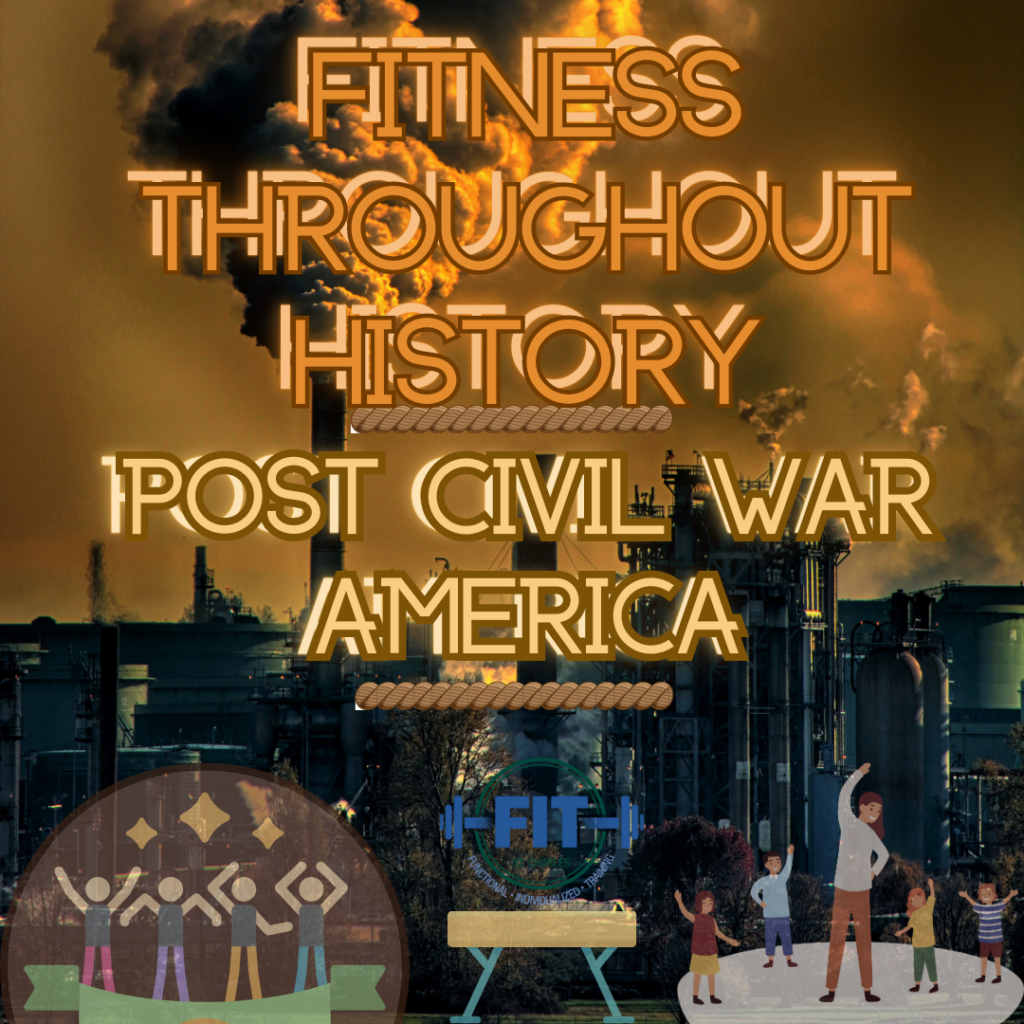
In the United States in the post Civil War era (1865-1900), as the country made great changes politically, things changed a lot in the fitness world as well. This is exactly what we are going to explore today!
One of the most important events with respect to what we consider modern day fitness in the US was the Industrial Revolution. The Industrial Revolution resulted in wide-spread cultural changes, as advancement in industrial and mechanical technologies led to a shift from labor-intensive jobs in rural life to a more urban lifestyle for much of the country. City life was less physically intense, subsequently leading to lower levels of physical activity among the urban population. Even farming became less labor intensive.
With the rise of mechanics that made life easier for Americans, there was also a rise in diseases such as cancer, cardiovascular diseases, and diabetes, in part due to poor conditions in the workplace, but also in part due to the decrease in physical activity. This level of preventable diseases had never before been prevalent in the United States. Fortunately by the 20th century, this would be addressed by the “fittest President of the United States” Theodore Rosevelt. However, before the turn of the 20th century, physical fitness, at least for adults, fell by the wayside.
Physical Education programs were beginning to emerge in some parts of the States, such as gymnastics (and again, this word was used as an umbrella term for structured physical activity) similar to those that began in Germany and Sweden. Charles Beck, one of the people that was instrumental in introducing gymnastics as an educational program, began his work in Northampton, Massachusetts in 1825 at the Round Hill School. This marked the beginning of the German influence of gymnastics in this country as a whole. It is important to remember that at the time, the term gymnastics also referred to sports such as basketball and football, as well as general weightlifting and calisthenics.
Charles Follen soon followed in Beck’s footsteps introducing German gymnastics to Harvard in 1826. Ladders, wooden horses (much like we see in gymnastics now), climbing ropes, and places specifically for running and jumping were built and used by students during his classes, even though he was originally hired to teach German as a language, not physical fitness!
Physical fitness programs in schools were just beginning to emerge and take hold. In fact, the first YMCA was built in 1850 in Boston and then spread throughout other parts of the country! The first YMCA focused on teaching the fundamentals of gymnastics as well as many different sports. The YMCA later became one of the most important fitness related institutions in America, as it not only focused on the health of young people, but also community involvement.
Also, in Post Civil War America, there was a conversation beginning that continues to this day- which is better for our children, health related fitness (exercise for the sake of exercise, a habit that will likely follow them into adulthood) or skill related fitness (such as sports, which is arguably more engaging for students, and usually a lot more fun).
